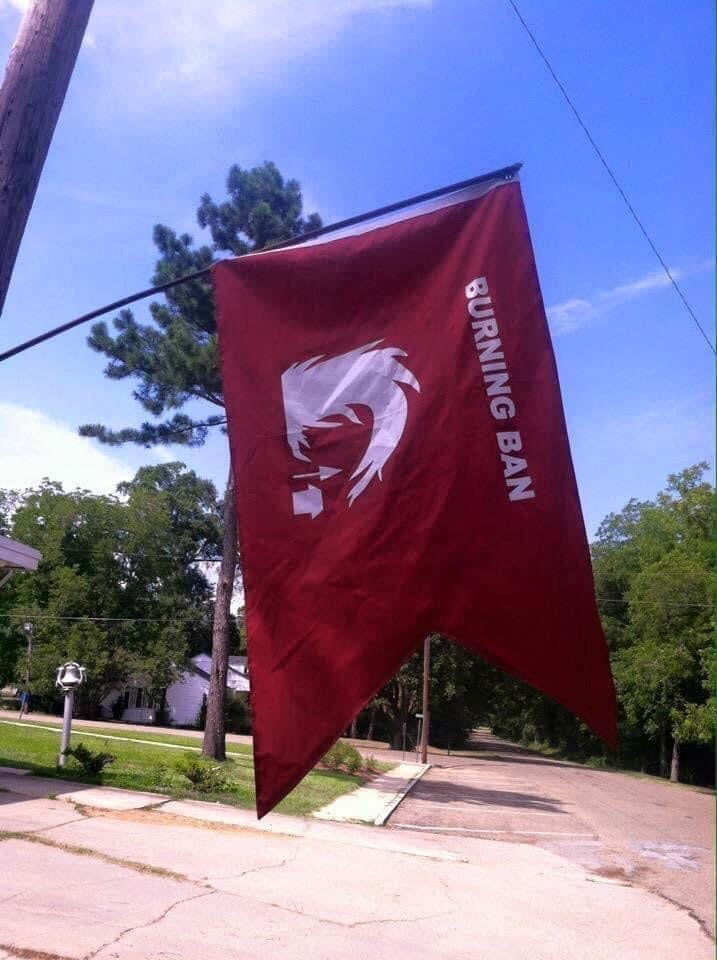Lindsay’s Garden: A dollar’s worth of seeds can feed a family
Published 11:05 pm Wednesday, November 20, 2013

Shirley Burnham / The Prentiss Headlight – Large heads of homegrown broccoli will grace many meals at the Lindsay house.
It may take a village to raise a child but it does not take an acre to raise a garden. P. J. Lindsay’s garden in Prentiss on Budd Street is proof of that. In his 44’ x 22’ garden plot that is preceded by quince, peach, pomegranate, apple and crabapple trees he has enough broccoli, rutabagas, turnips, mustard, collards, peppers, lettuce and green onions to feed an extended large family.
Lindsay gardens year round and his summer garden was bountiful but he has no qualms about getting rid of those spent out plants to get the fall garden growing. Though the recent frost turned his special purple Angel Trumpets and summer flowering plants to mush, his cold hardy fall vegetables remain crisp and flavorful looking.
Raised by a truck-farming family Lindsay states gardening has always been in his blood. The only time he has not been growing things was when he was in the Army. Since his retirement after 31 years with the US Postal Service he has been cultivating as a hobby and gives special care to his garden like a favored grandchild.
Many of his vegetables are grown from heirloom seed Lindsay says you cannot get in a local store but from a special heirloom seed catalog. Some of his peppers come from seeds that have been saved and passed down by his generations.

Shirley Burnham / The Prentiss Headlight – With only 44’ x 22’ and 22 rows P. J. Lindsay of Prentiss has created a producing masterpiece of fall vegetables.
“The rutabagas will be ready in early January and will be tender. The mustard and turnips are good with ham hock and the lettuce tastes a lot better than anything from the store. Anything fresh is a lot better for you than what you don’t know where it comes from, who has handled it or how it’s been grown,” states Lindsay.
Lindsay welcomes wasps, yellow jackets and bumblebees to his garden. “With so much pesticides we’ve about killed off our honeybees and people are spraying the wasps and yellow jackets, dirt-dobbers too, but they help eat the bad insects. I bought and released 13,000 ladybugs a few years back. They are beneficial to the garden and the neighborhood.”
“There’s no chemical bug spray on my plants. Some worms I may kill by hand, but,” Lindsay says with a grin, “stink bugs are a different matter.”

Shirley Burnham / The Prentiss Headlight – Lindsay is an avid composter furnishing rich new soil for feeding his garden.
Lindsay muses that what he does could be called organic gardening. He makes his own compost from spent plant material, egg shells as well as grass clipping and leaves shed from his huge magnolia tree to add to the soil’s richness claiming, “If you don’t feed your garden it wont feed you.” He gives thanks for the rain but keeps a garden hose handy for dry spells. In gratitude for his attention his garden rewards him with plenty of fresh produce to eat and share.
This vintage gardener likes to just sit on his stool with his concrete dog and watch his garden grow but he is willing to share to newbies some of his gardening knowledge gained over the years.
“Most young people don’t know things about gardening like lack of calcium can cause tomato rot,” stated Lindsay, “and egg shells in the compost are good for that; and that you can make your own compost in a season without much trouble. For a dollar’s worth of seeds you can feed a family,” states Lindsay. “It doesn’t take a lot of land or money, just time and care.”
With the paychecks stretching tighter these days it may well pay all of us to take advantage of the knowledge of seasoned gardeners like P. J. Lindsay and use that dollar where it will stretch the farthest—invested in a garden.

Shirley Burnham / The Prentiss Headlight – The pepper on the left Lindsay crossed with bell pepper himself and calls it his “PJ pepper.”





